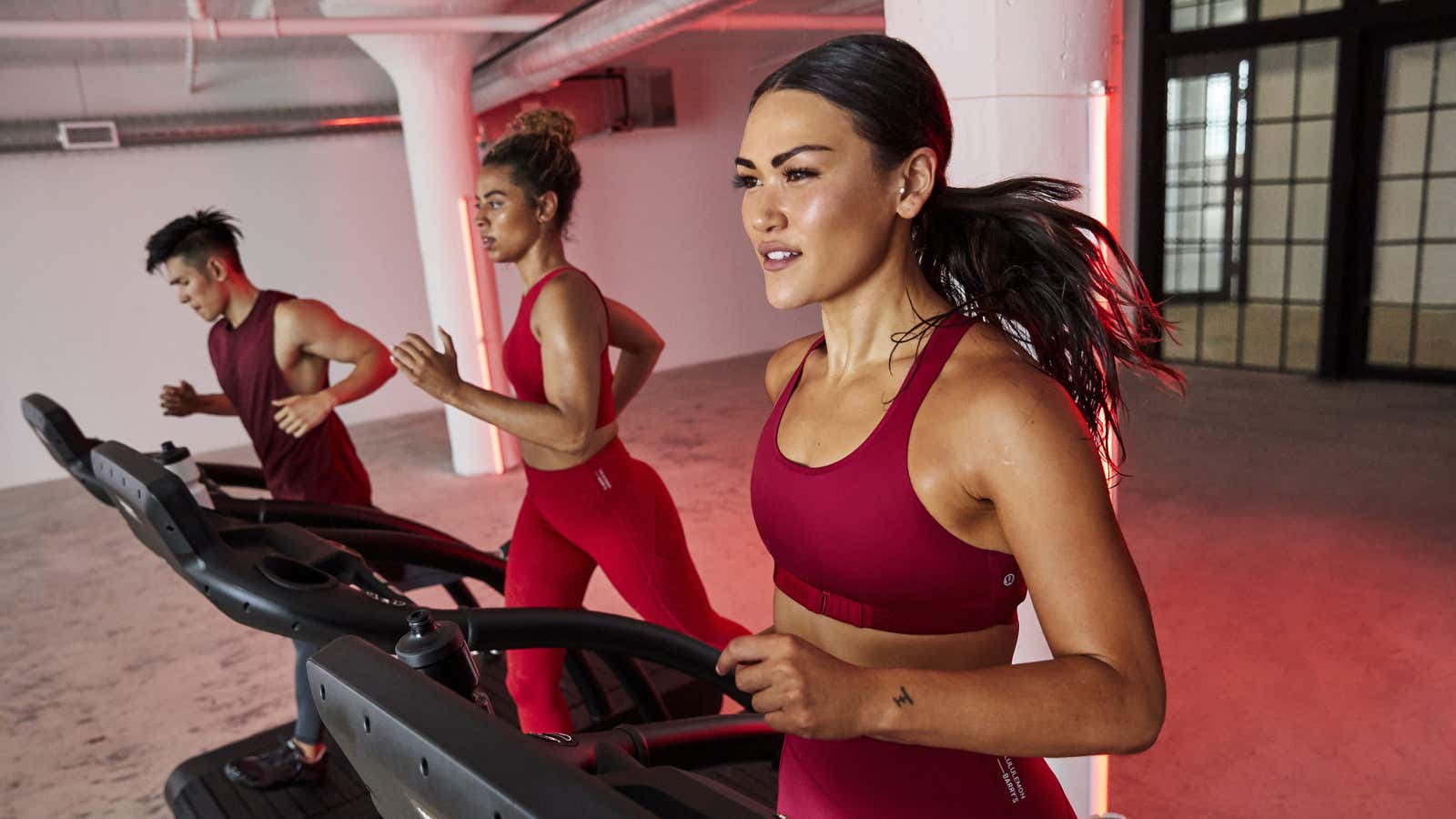The share of unmarried American women is on the rise as more women in the US delay marriage or forgo nuptials entirely.
That should be good news for activewear brands, analysts from the investment firm Morgan Stanley predicted in a recent research note.
Based on data from the US census, the firm estimates that by 2030, roughly 45% of “prime working age” American women, which Morgan Stanley defines here as those between 25 and 44, will be single.* This would be the largest share in history, up from the 41% share measured in 2018. Meanwhile, more women also are earning college degrees and working, increasing their spending power.
Armed with that information, the analysts looked at areas where single women tend to spend more than single men and the US population as a whole. Clothing and footwear were among the standouts. But analysts predict a drag on fashion spending as the US population ages overall, so they took a more selective approach and focused on another notable difference between single and married women.
Single women spend “significantly more time exercising”—about 1.5 hours more per week, on average, according to data Morgan Stanley references from the Journal of Marriage and Family. “More singles means more people exercising more frequently, buying more athletic goods, and replacing them more often,” the report states. (The report doesn’t mention it, but it probably doesn’t hurt that there’s a long-term trend of more people wearing activewear as everyday clothing.)
Single men also exercised more than married men, making a brand’s share of female customers in particular a bit less important. But Morgan Stanley argues there are still some brands poised to benefit, such as Nike and Lululemon.
They’ll have competition. After underserving women for years, the sports industry as a whole has begun to recognize the potential sales they represent. Brands such as Adidas have created products specifically for women, rather than just retrofitting men’s versions, and enlisted partners such as Beyoncé. In the meantime, the lack of attention to female athletes created an opening for labels such as Lululemon, Athleta, and Outdoor Voices to thrive by serving them.
Still, there’s room for many brands to increase sales to women. “If you look at fashion apparel versus athletic apparel, or fashion footwear versus athletic footwear, the women’s portion of the fashion businesses are much larger than the men’s portion,” Matt Powell, sports industry analyst for research firm NPD Group, previously told Quartz. “When we move over to look at athletic, the men’s piece is much bigger than the women’s piece.”
Activewear wasn’t the only category Morgan Stanely said was poised to capitalize on America’s surge in single women. It also believes that off-price chains such as TJ Maxx and Ross could benefit, as they have large shares of female customers and should attract women “whose incomes are lower than their married counterparts but are more willing to spend on clothing and shoes.” Single women also tend to spend more than the overall population on beauty and personal care, which means their growing numbers are good for companies such as Sephora and Ulta, too.
*Note: The Federal Reserve and other major US statistics-gathering bodies typically define prime working age as ranging from the ages of 25 to 54.
